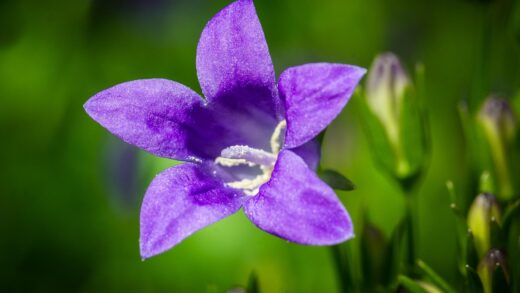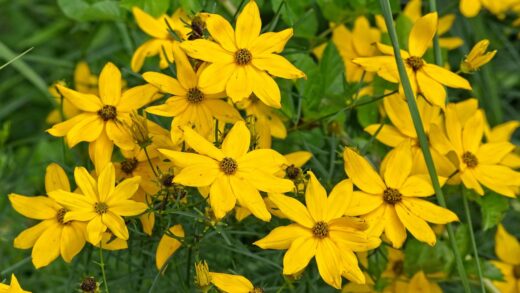Providing comprehensive care for quince trees is a rewarding endeavor that culminates in a harvest of uniquely aromatic and versatile fruits. This process involves a holistic approach, considering everything from site selection and soil health to ongoing maintenance throughout the tree’s life. Successful quince cultivation hinges on understanding the specific needs of the tree, which, while not overly demanding, requires consistent attention to detail to thrive and produce optimally. By establishing a robust care regimen from the outset, growers can ensure their trees remain healthy, vigorous, and productive for many years, yielding fruit that is perfect for preserves, baking, and culinary creations.
Mastering the art of quince care begins with a foundational knowledge of its preferred growing conditions. These trees flourish in well-drained, fertile soils and require a location that receives ample sunlight to encourage robust growth and fruit development. Before even planting, a thorough soil analysis can provide invaluable insights into its composition, allowing for any necessary amendments to be made. Creating an environment that mirrors the quince’s native habitat is the first crucial step toward a successful harvest, setting the stage for a tree that is not only productive but also resilient against environmental stressors.
Ongoing observation is a cornerstone of effective quince tree management. Regularly inspecting the leaves, branches, and developing fruit allows for the early detection of potential issues, such as nutrient deficiencies, pest infestations, or diseases. This proactive approach enables timely intervention, preventing minor problems from escalating into significant threats to the tree’s health. A well-cared-for quince tree will exhibit vibrant green foliage, strong new growth each season, and a bountiful display of blossoms in the spring, all of which are indicators of its overall well-being.
The annual cycle of care adapts to the changing seasons, each bringing its own set of tasks and priorities. From the dormant pruning in late winter to the careful monitoring of water needs during the hot summer months, the grower’s role is to support the tree’s natural rhythms. This includes providing appropriate nutrition at key moments in the growth cycle and ensuring the developing fruits are protected and have adequate space to mature. Ultimately, the quality and quantity of the harvest are a direct reflection of the meticulous and season-specific care provided throughout the year.
Understanding the annual growth cycle
The quince tree’s year begins not in spring, but in the quiet dormancy of winter. During this resting period, the tree conserves its energy, and vital physiological processes are prepared for the coming growing season. This is the ideal time for structural pruning, as the absence of leaves provides a clear view of the tree’s framework, allowing for precise cuts that will shape future growth and improve air circulation. The cold temperatures also help to suppress the activity of many pests and pathogens, making it a safer time to make pruning wounds. Understanding this dormant phase is critical for planning the year’s maintenance schedule.
More articles on this topic
As winter recedes and soil temperatures begin to rise, the tree awakens from its slumber, marked by the swelling of buds on its branches. This is a critical transition period where the tree draws upon its stored energy reserves to push out new leaves and, shortly thereafter, a profusion of beautiful, large blossoms. The health of these initial growths is a strong indicator of the tree’s vigor and its potential for fruit production in the coming season. Providing adequate water and ensuring essential nutrients are available in the soil during this phase is paramount for a strong start.
The period following bloom is one of rapid development, encompassing fruit set and the initial stages of fruit growth. Pollinated flowers give way to tiny, fuzzy fruitlets that will gradually swell over the late spring and summer months. This phase places a significant energy demand on the tree, necessitating consistent moisture and nutrient availability to support both vegetative growth and the developing crop. It is also a time to be vigilant for early signs of common quince diseases, such as fire blight, which can take hold during the warm, humid conditions of spring.
By late summer and early autumn, the focus of the tree’s energy shifts from vegetative growth to fruit maturation and the accumulation of sugars and flavor compounds. The quince fruits slowly transform from a hard, green state to their characteristic golden-yellow hue, developing their unmistakable, intense fragrance. As the days shorten and temperatures cool, the tree begins to prepare for dormancy once again, translocating nutrients from the leaves back into the woody structures for storage over winter. This final phase culminates in the harvest, the successful result of a year’s worth of careful management and attention to the tree’s cyclical needs.
Soil requirements and preparation
Quince trees demonstrate a preference for deep, fertile, and well-drained soils, which allow their root systems to expand without restriction and access necessary water and nutrients. Loamy soils, which offer a balanced combination of sand, silt, and clay, are considered ideal as they retain adequate moisture while preventing waterlogging. Heavy clay soils can be problematic, as they tend to hold excessive water, particularly during rainy seasons, which can lead to root rot and other related diseases. Conversely, overly sandy soils may drain too quickly, requiring more frequent irrigation to keep the tree properly hydrated.
More articles on this topic
Proper soil preparation before planting is a fundamental step that can significantly influence the long-term health and productivity of the tree. This process should begin with the removal of all perennial weeds and the loosening of the soil to a depth of at least half a meter in the intended planting area. Incorporating well-decomposed organic matter, such as compost or aged manure, is highly beneficial for improving soil structure, enhancing its water-holding capacity, and providing a slow-release source of essential nutrients. This enrichment creates a welcoming environment for the young tree’s roots, encouraging them to establish quickly and grow vigorously.
The ideal soil pH for quince cultivation ranges from slightly acidic to neutral, typically between 6.0 and 7.0. Conducting a soil test prior to planting is a wise investment, as it provides precise information on the existing pH level and nutrient composition. If the soil is too acidic, lime can be applied to raise the pH to the desired range, while sulfur can be used to lower the pH in overly alkaline soils. Adjusting the pH ensures that essential nutrients are chemically available for the tree to absorb, preventing deficiencies that could otherwise hinder its growth.
Maintaining soil health is not a one-time task but an ongoing commitment throughout the life of the quince tree. An annual application of organic mulch, such as wood chips, straw, or compost, around the base of the tree is highly recommended. Mulching helps to suppress weed growth, conserve soil moisture by reducing evaporation, and regulate soil temperature, protecting the roots from extreme heat in summer and cold in winter. As the mulch gradually breaks down, it continues to enrich the soil with organic matter, fostering a healthy ecosystem of beneficial microorganisms that support root function.
Watering and moisture management
Consistent and adequate moisture is crucial for the health of quince trees, directly impacting everything from vegetative growth and flowering to fruit size and quality. While they are considered moderately drought-tolerant once established, a lack of water, especially during critical growth periods, can lead to significant stress. This stress can manifest as wilting leaves, premature fruit drop, and the development of smaller, lower-quality fruits. Therefore, establishing a proper irrigation strategy tailored to the specific climate and soil conditions is essential for successful cultivation.
The most critical period for watering is from spring bloom through the main fruit development phase in summer. During this time, the tree’s demand for water is at its peak as it supports the growth of new shoots, leaves, and the swelling fruit. Young, newly planted trees are particularly vulnerable to drying out as their root systems are not yet extensive enough to explore a large volume of soil for moisture. They require regular, deep watering to encourage the roots to grow downwards, establishing a strong and resilient foundation for the future.
The best method for irrigating quince trees is to provide deep, infrequent soakings rather than light, frequent sprinklings. Deep watering encourages the roots to grow deeper into the soil profile, where they are better protected from surface heat and can access more consistent moisture reserves. A soaker hose or drip irrigation system is ideal, as it delivers water slowly and directly to the root zone, minimizing water loss through evaporation and preventing the foliage from getting wet, which can reduce the risk of fungal diseases. The goal is to moisten the soil to a depth of at least 30-50 centimeters with each irrigation cycle.
Monitoring soil moisture is key to determining when to water, rather than adhering to a rigid schedule. A simple way to check is to dig a small hole near the tree’s drip line and feel the soil a few inches below the surface; if it feels dry, it is time to water. It is also important to gradually reduce the frequency of watering in the late autumn as the tree prepares for dormancy. This helps to harden off the new growth, making it more resistant to winter cold, and prevents the soil from becoming overly saturated during the cooler, wetter months.
Nutrient management and fertilization
A well-structured fertilization program is vital for sustaining the vigor and productivity of quince trees, ensuring they have the necessary nutrients to produce high-quality fruit year after year. The primary macronutrients required are nitrogen (N), phosphorus (P), and potassium (K), each playing a distinct and crucial role in the tree’s development. Nitrogen is essential for vigorous vegetative growth, including the development of leaves and shoots, which are the engine of photosynthesis. Phosphorus is critical for root development, energy transfer, and flower formation, while potassium contributes to overall tree hardiness, disease resistance, and is vital for fruit quality, including sugar content and size.
The timing of fertilizer application is just as important as the type of fertilizer used. Generally, the best time to fertilize quince trees is in the early spring, just as new growth begins to emerge. This timing ensures that the nutrients are available to the tree when its demand is highest, fueling the initial flush of leaves and supporting the development of flowers and young fruit. A balanced, slow-release granular fertilizer formulated for fruit trees is often a good choice, as it provides a steady supply of nutrients over several months. A second, lighter application can sometimes be beneficial in early summer if the tree shows signs of deficiency, but late-season fertilization should be avoided as it can encourage new growth that may not harden off before winter.
In addition to macronutrients, quince trees also require a range of micronutrients, such as iron, manganese, and zinc, albeit in much smaller quantities. Deficiencies in these micronutrients can lead to specific symptoms, such as yellowing leaves with green veins (iron chlorosis), which is common in alkaline soils. An annual application of compost or well-rotted manure can help supply a broad spectrum of these essential elements and improve the soil’s overall health and structure. If specific deficiency symptoms appear, a foliar spray containing the needed micronutrient can provide a quick remedy, delivering it directly to the leaves for rapid absorption.
It is crucial to avoid over-fertilizing, particularly with nitrogen, as this can have detrimental effects. Excessive nitrogen can promote lush, weak vegetative growth at the expense of fruit production, making the tree more susceptible to pests like aphids and diseases such as fire blight. It can also delay fruit maturity and reduce the storage life of the harvested quince. Therefore, it is always recommended to base fertilizer applications on the tree’s age, size, and observed vigor, and if possible, on the results of a soil or leaf analysis for a more precise approach to nutrient management.
Pruning for health and productivity
Pruning is one of the most important maintenance practices for quince trees, directly influencing the tree’s structure, health, and the quality of its fruit. The primary goals of pruning are to establish a strong, well-balanced framework, improve sunlight penetration and air circulation throughout the canopy, and encourage the production of high-quality fruit. A well-pruned tree is not only more productive but also less prone to diseases, as the improved airflow helps to dry leaves and branches quickly, creating a less favorable environment for fungal pathogens.
The best time to perform major structural pruning on quince trees is during their dormant period in late winter or very early spring, before any new growth begins. At this time, it is easy to see the entire branch structure without the obstruction of leaves. The main focus of dormant pruning is to remove any dead, damaged, or diseased wood, as well as any branches that are crossing or rubbing against each other. It is also the time to thin out the canopy, removing some of the inward-growing branches and water sprouts to open up the center of the tree to more light and air.
Quince trees produce fruit on new wood, specifically on short spurs that develop on older branches. Therefore, the pruning strategy should aim to encourage a continuous renewal of this fruiting wood. This can be achieved by selectively heading back some of the main branches each year to stimulate the growth of new lateral shoots. It is important, however, not to over-prune, as removing too much wood can shock the tree and drastically reduce the fruit yield for that season. A balanced approach that removes no more than 20-25% of the canopy in a single year is generally recommended.
In addition to the main dormant pruning, some light summer pruning can also be beneficial. This typically involves removing vigorous, upright shoots, often called water sprouts, that can shade the developing fruit and compete with it for energy. Removing these shoots directs the tree’s resources back into fruit development and helps maintain the open structure established during winter pruning. Any suckers that emerge from the base of the trunk or the root system should also be removed as soon as they appear, as they draw energy away from the main tree.


















